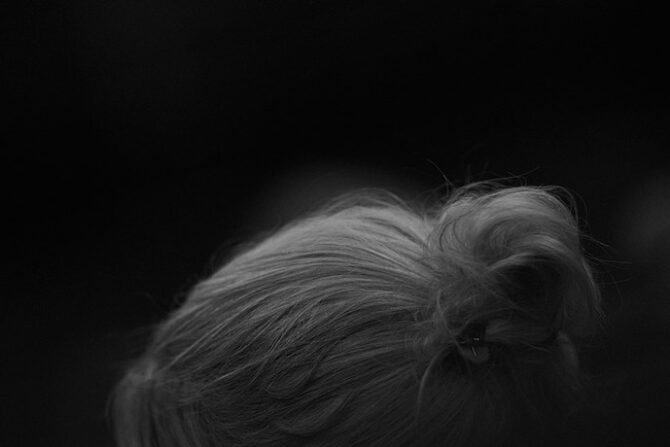You ever stand in front of the mirror when you’ve done styling your hair and think to yourself, “Why does it still look flat?” Yeah, me too. If you have fine hair, you already know the struggle. You wash it, dry it, use a product or two, but it just doesn’t seem to look like you did anything. I’ve been there.
Thin hair isn’t bad hair. It just needs a different kind of attention. And the truth is, you don’t need to slather on the product or take hours over a curling iron to get some volume. You just need to tweak a few things in your routine—starting with the little things. That’s where fine hair volumizing techniques come in.Let’s walk through it.
Table of Contents
Know What You’re Working With
Before you do anything else, you must understand what kind of hair you have. Having fine hair does not mean you don’t have a lot of hair. It simply means that the individual strand is thinner in diameter. You can have a full head of fine hair, and it still may be looking flat because those strands do not have much natural texture to them.
Occasionally, people confuse fine hair with thin hair. Thin hair means you don’t have much hair. Fine hair means the hair you do have is light in weight. That is a different thing, and that makes a big difference when you’re selecting products or thinking about how to style it. Once you know that, the rest is easy.

It Begins in the Shower
This caught me off guard when I first heard it. I had always presumed that volume was something you created through styling and not shampooing. But the truth is, using the wrong shampoo or conditioner can weigh your hair down before you even leave the shower.
What you need is a light, sulfate-free volumizing shampoo. Not super creamy or heavy. You need to wash your scalp without coating your strands. And with conditioner, for goodness’ sake, skip it on your roots. Seriously. Just put it on the ends of your hair. That’s where you’ll be needing the moisture.
Also, weekly, I like to use a clarifying shampoo. It washes out product and hard water deposit. Just don’t use it too much. Once a week is enough. If you discover your hair lighter and springier after washing it, that deposit was the problem all along.
Flip Your Head When You Blow Dry
If you’re not already doing this, try it tomorrow. After towel-drying your hair, flip your head upside down and aim the blow dryer at your roots. Don’t worry too much about how it looks yet. You’re just focusing on lift.
The way the air flows is crucial. Blowing your hair upside down at the roots gives it a small push that makes it stick up instead of lying flat. Once you’ve dried your roots quite well, flip your head back up and finish the rest as usual using a regular blow-dry. You can blow-dry with a round brush if you want more shape, but honestly, the upside-down trick alone works miracles.
And don’t neglect the heat protectant. I know it seems like an extra step you can do without, but it makes a difference—especially if you’re heat styling every day. When your hair is dry, switch your dryer to the cool setting and blow your roots with cold air. It sets the lift.
Also Read: How to Get Rid of Static in Hair
Use Root-Lifting Products the Right Way
I thought I was getting it right. I’d spray something around my hairline and I was set. But it wasn’t until I actually read the directions (go figure) that I learned I was spraying too much and applying it in the wrong places.
The lightest sprays or mousses will do the most to lift roots. If it feels sticky or greasy after that, you probably overused—or used the wrong stuff. Start by spraying or applying it to wet hair, right at the roots. Then just slightly finger-comb it. You don’t want it all over your head. Just do the crown and sides near your temples.
The trick is to apply it and then blow-dry it. Most of these products are activated by heat, and not applying heat essentially negates the product.
Try the Velcro Roller Trick
Don’t eye-roll at this one. I used to think Velcro rollers were just something people used back in the ’90s. But I was wrong. If you’ve never had the pleasure, you’re missing out on an incredibly easy way of adding volume—especially at the crown.
Here’s the trick: after blow-drying your hair (it can be more or less dry, not sopping wet), take a few large sections at the crown of your head and roll them back with Velcro rollers and clamp. Leave them while you get ready or have some coffee. That’s all it takes for 15–20 minutes.
When you take them out, don’t brush it out right away. You simply go through it with your fingers. You’ll achieve that great lift that has the look that you worked so much harder than you really did.
Tease It—But Gently
I know the word “teasing” brings back memories of stiff hairspray and damage, but it doesn’t have to be that way. A little teasing goes a long way when it comes to fine hair. The key is to be gentle.
Use a fine-tooth comb and tease small sections underneath the top layer of your hair. Focus on the roots at the crown. You’re not trying to create a helmet—you’re just building a little structure underneath so the top has something to rest on.
Then gently smooth the top layer over it. You don’t even have to use hairspray if you don’t want extra hold. And if you ever conclude that teasing just isn’t for you, no problem. There are other ways of getting volume without using combs and back-brushing.
You Can Also Read: Heatless Hair Curler: Your Guide to Effortless, Healthy Curls
Dry Shampoo Isn’t Just for Dirty Hair
This one changed everything for me. I had only ever used dry shampoo on really greasy hair before. But it appears that spraying it on clean hair gives texture and makes it look fuller.
Right after styling, you can lift sections of hair and spritz a small amount of dry shampoo at the roots. Let it sit for a couple of seconds, and then rub it in softly. It gives your hair the soft hold that makes it stay lifted instead of lying flat an hour later.
You don’t need to go overboard. A little bit in the right places—crown, sides, maybe the back—is all it takes. And always hold the can a few inches away to avoid white residue.
Get the Right Cut
Whatever you use, if the cut’s not working for your hair type, it’s going to be a struggle every morning. Fine hair doesn’t particularly care for heavy, blunt cuts. Those just pull it down.
What worked best for me was putting on soft, subtle layers. Not anything too choppy. Just enough to take some weight off and let the top of my hair lift a bit. You might find that shorter cuts work better for you as well. The longer fine hair gets, the flatter it will fall.
Once, I had a single haircut that made all the difference. It wasn’t showy, but it made styling a thousand times easier. I didn’t need to work as hard because the shape of the cut did all the heavy lifting for me.
Color Can Trick the Eye
Thickness isn’t always about texture—it’s also about how things look. Sometimes a good color work will make an illusion of thickness and movement.
If your hair is one color, especially a dark color, it’s going to look thicker and flatter. But if you add soft highlights or lowlights, you’re adding contrast. That contrast gives the eye something to follow, and it will make your hair look like it has more body than it actually does.
You don’t have to bleach your entire head. Only a few pieces framing your face or some light layers of tone will make a huge difference. And always work with someone who has an understanding of fine hair—you don’t want to destroy it with over-processing.

Sleep On Volume
It’s weird, but how you sleep actually does affect the look of your hair the next day. If you sleep with flat hair, your hair will wake up flat.
A few things count:
- Use a silk or satin pillowcase. Cotton frays your hair.
- Style hair into a loose top bun or soft braid at night. It holds some of that volume overnight.
- If you’ve used Velcro rollers in the past, you can just sleep with a couple of soft scrunchies to twist sections out and pin up instead of sleeping with them down.
- Shake it out in the morning with your fingers. No brush. And in fact, some of my second-day hair actually looks better than day one—especially when I do it the night before.
Conclusion
You don’t need to revolutionize your routine in the name of making a change. I used to think that I needed to have a drawer full of luxury products and spend a whole hour every day in front of the mirror. However, once I started paying attention to the little details—how I washed my hair, how I dried my hair, what I applied to it—it became easier.
Fine hair just needs a different kind of attention. And when you give it what it needs, it will surprise you. Volume isn’t just about looks either. It’s about the way you feel. You feel lighter. More put together. A little more confident.
And if it doesn’t quite work for you? That’s okay too. Hold on to the ones that do. Ditch the rest. You’ll find it.
Frequently Asked Questions
Can I add volume without using heat?
Yes, you can. Velcro rollers are great without the dryer. You also can loosely braid your hair when it’s damp and air dry it. Dry shampoo works fine even without the use of heat.
Will layering inevitably make my hair look more voluminous?
Not necessarily. Too many layers thin it out rather than plumping it up. The best layers are soft and gentle—just enough to remove weight, not volume.
What ingredients should I steer clear of in volumizing products?
Watch out the heavy oils and heavy silicones. They weigh your hair down and make it look greasy fast. You want light, water-based products whenever you can.
How frequently should I wash fine hair for maximum volume?
Every 2–3 days is ideal. Daily washing can dry out natural oils, though, and keeping it dirty for too long can make your roots become flat. Dry shampoo is a lifesaver in between.



